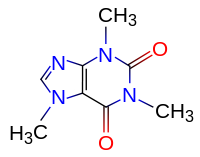Portal:Drink
|
D r i n k A portal dedicated to all beverages |
||||||||||||||||||||||||||||||||||||||||||
The Drink Portal
A drink, in this case a glass of port wine.
Drinks, or beverages, are liquids specifically prepared for human consumption. In addition to basic needs, beverages form part of the culture of human society. Despite the fact that most beverages, including juice, soft drinks, and carbonated drinks, have some form of water in them; water itself is often not classified as a beverage, and the word beverage has been recurrently defined as not referring to water. Essential to the survival of all organisms, water has historically been an important and life-sustaining drink to humans. Excluding fat, water composes approximately 70% of the human body by mass. It is a crucial component of metabolic processes and serves as a solvent for many bodily solutes. Health authorities have historically suggested at least eight glasses, eight fluid ounces each, of water per day (64 fluid ounces, or 1.89 litres), and the British Dietetic Association recommends 1.8 litres. The United States Environmental Protection Agency has determined that the average adult actually ingests 2.0 litres per day. Distilled (pure) water is rarely found in nature. Spring water, a natural resource from which much bottled water comes, is generally imbued with minerals. Tap water, delivered by domestic water systems in developed nations, refers to water piped to homes through a tap. All of these forms of water are commonly drunk, often purified through filtration. An alcoholic beverage is a drink containing ethanol, commonly known as alcohol, although in chemistry the definition of an alcohol includes many other compounds. Alcoholic beverages, such as wine, beer, and liquor have been part of human culture and development for 8,000 years. Non-alcoholic beverages often signify drinks that would normally contain alcohol, such as beer and wine but are made with less than .5 percent alcohol by volume. The category includes drinks that have undergone an alcohol removal process such as non-alcoholic beers and de-alcoholized wines. Drink and Beverage WikiProjectsWikiProject Food & Drink is an association of Wikipedians with an interest in culinary-related subjects. They have come together to co-ordinate the development of food and drink articles here on Wikipedia as well as the many subjects related to food such as foodservice, catering and restaurants. If you wish to learn more about these subject as well as get involved, please visit the Food & Drink Wikiproject page to see how you can help! Beyond the general culinary interests, several groups of Wikipedians have banded together for beverage-specific projects covering their favorite types of drinks. If any of these subjects pique your interest, please feel free to visit their projects. These groups would love you to have you participate!
Selected article
Selected person
Selected ingredient
Caffeine is a bitter white crystalline xanthine that acts as a psychoactive stimulant drug and a mild diuretic (speeds up urine production) in humans and other animals. Caffeine was discovered by a German chemist, Friedlieb Ferdinand Runge, in 1819. He coined the term "kaffein", a chemical compound in coffee, which in English became caffeine. Caffeine is also called guaranine when found in guarana, mateine when found in mate, and theine when found in tea; all of these names are synonyms for the same chemical compound.
Caffeine is found in varying quantities in the beans, leaves, and fruit of some plants, where it acts as a natural pesticide that paralyzes and kills certain insects feeding on the plants. It is most commonly consumed by humans in infusions extracted from the cherries of the coffee plant and the leaves of the tea bush, as well as from various foods and drinks containing products derived from the kola nut. Other sources include yerba mate, guarana berries, and the Yaupon Holly. Drink newsDrink news from Wikinews · Help write more articles!
Selected quote
Did you know...Selected pictureA Bijou cocktail featuring the three "gems" of alcohol, diamond (gin), ruby (vermouth), and emerald (chartreuse) Things you can do
CategoriesDrink listsThe following are topics relating to drinks:
Related portalsRelated WikiProjects
Associated Wikimedia |
||||||||||||||||||||||||||||||||||||||||||









